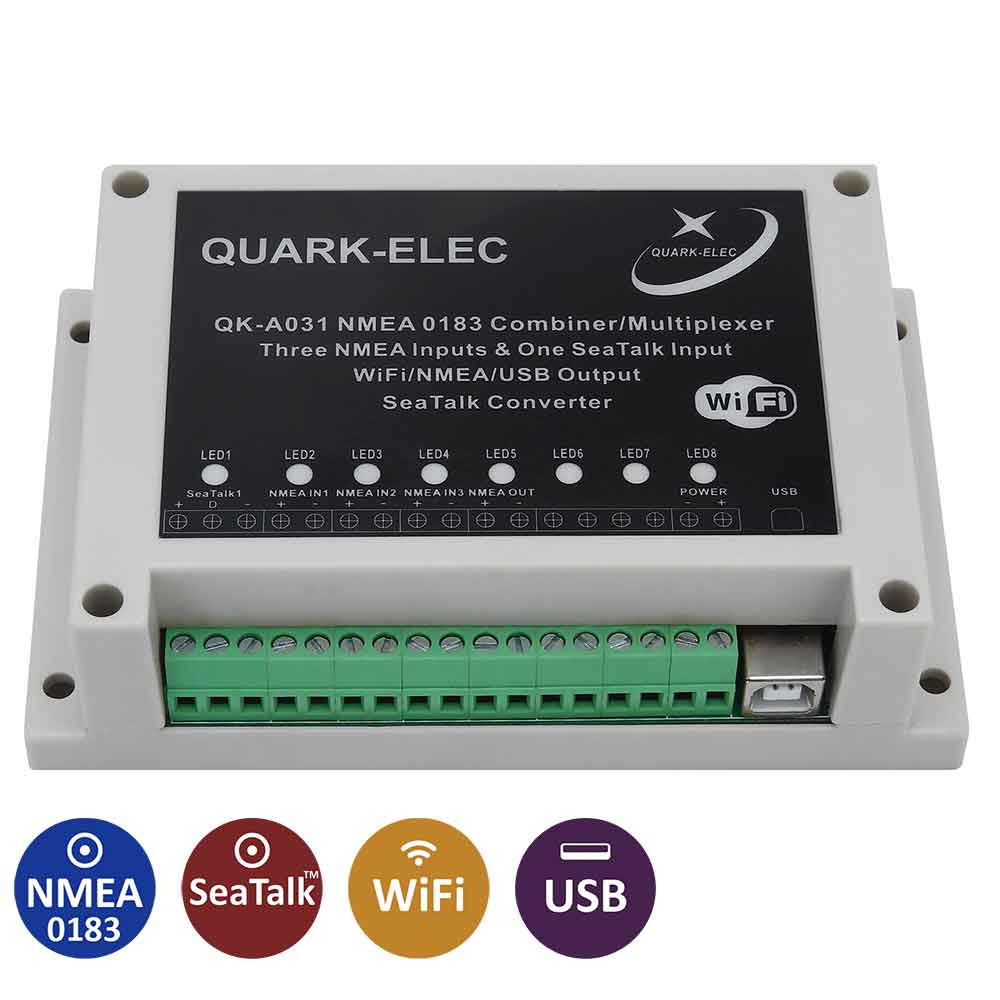What’s the difference between an AIS receiver and an NMEA Multiplexer ?
It’s a question we were asked recently by a keen sailor, but confused by all the terminology. (AIS receiver, NMEA Multiplexer, Transponder, Chart Plotter, etc., etc.)
The 2 are dramatically different.
- An AIS Receiver – Will help you spot boats, land, etc. in your local area
- An NMEA Multiplexer – Will combine the information from your AIS receiver (and other items of equipment such as GPS, compass, wind, etc.) so that the information is manageable.
So, do you need one, both, others??
It all depends what type of equipment you have onboard & what you would like to know.
There tend to be 3 options:
Option 1 – Basic Installation (AIS receiver on it’s own)

Say, you already have an aerial onboard and a radio on your boat.
But want to upgrade to also have AIS information.
So that you know which boats are in the area & which direction they are going in.
Then you probably just want to add an AIS receiver.
There are a variety of different ones you can use, depending on how much information you want to know.
For example, using something as simple as the AIS receiver USB dongle is a very easy & quick way to start for less than £50.
All you need to get is a splitter, so you to (you can use your existing aerial for both the AIR receiver and your radio) and then plug it into your laptop.

Getting AIS is a simple as that.
.
Option 2 – A bit more complex (AIS receiver + NMEA multiplexer in one)
If say you want to
- Get information from GPS (so you know where your boat is) and then
- Plot this onto a chart plotter or your laptop – so you can easily see all the information on screen.
- And use WiFi so that you can see all the information in one place (possibly on your phone)
Then you will need a more sophisticated AIS receiver (such as the A026 AIS Receiver & multiplexer ) – which receives AIS data but can also combine this with other information.
However a key item to consider is which ‘brand’ of equipment you are using – as some are only able to communicate in their own language (NMEA, SeaTalk, etc.).
And if you get your combination multiplexer you will need to get one specifically designed to also work with the equipment you already have an board. Such as a SeaTalk, etc.
.
Option 3 – The ultimate (NMEA Multiplexer + stand alone AIS receiver)
The most complicated option is where you have an ‘all singing & dancing’ multiplexer that can combine all the different ‘software languages’ from your equipment onboard and then output that in an easy to use & understandable way.
So what is a standalone multiplexer ?
If you have a number of different items of equipment onboard they will all be collecting information which you might like to know.
For example you might have a
- Separate AIS receiver (telling you which boats are in the area & where they are going),
- GPS monitor (telling you where your boat is),
- Wind monitor (telling you wind speed & direction),
- Depth monitor, etc.
The problem is that your laptop or pc won’t be able to manage all the information at once. Similarly, some of the information might be provided using the NMEA system & some using SeaTalk.
A bit like 4 Waiters reading menu cards..

A multiplexer will collects lots of different information and then present it to you in a very easy & simple to understand format.
It’s a bit like 4 waiters reading a menu card aloud simultaneously in different languages.
Which might be very difficult to understand. (& annoying)
A multiplexer will help you make sense of the information by ‘listening’ for you..
It will then combine all the information, and provide this to you in an easy to understand way.
So, do you need Option 2?
An NMEA Multiplexer + AIS receiver in one
The ‘all-in one’ AIS receiver & multiplexers in Option 2 above are great if you are happy to use 1 specific type of imput – such as equipment using SeaTalk or alternatively using NMEA.
Or option 3?
A Standalone NMEA Multiplexer
It’s important to realise that a standalone multiplexer is quite a ‘step up’ from option 2.
In that it can use different types of input and then combine this in a way which is easy to understand. (So that you can focus on an enjoyable boat trip, and access the data anywhere on your boat)
For example the A031 NMEA Multiplexer with Sea Talk Converter can combine three NMEA inputs and one SeaTalk1 input and then export the data using an NMEA output, as well as an WiFi interface and a USB port to connect to host devices.

Not sure what you need ? :
Hopefully our basic guide to AIS receivers & multiplexers has provide background information.
Or for more information have a look at the products mentioned in the article:
QK-A026 AIS Receiver with NMEA Multiplexer + WiFi + GPS
$197.16 ($164.30 excl. VAT)
QK-A021 AIS Receiver USB Dongle
$57.59 ($47.99 excl. VAT)
QK-A031 NMEA 0183 Multiplexer with SeaTalk Converter
$161.01 ($134.18 excl. VAT)
Our comparison chart will show you in more detail which AIS receiver and/or multiplexer to use & when – more details.



